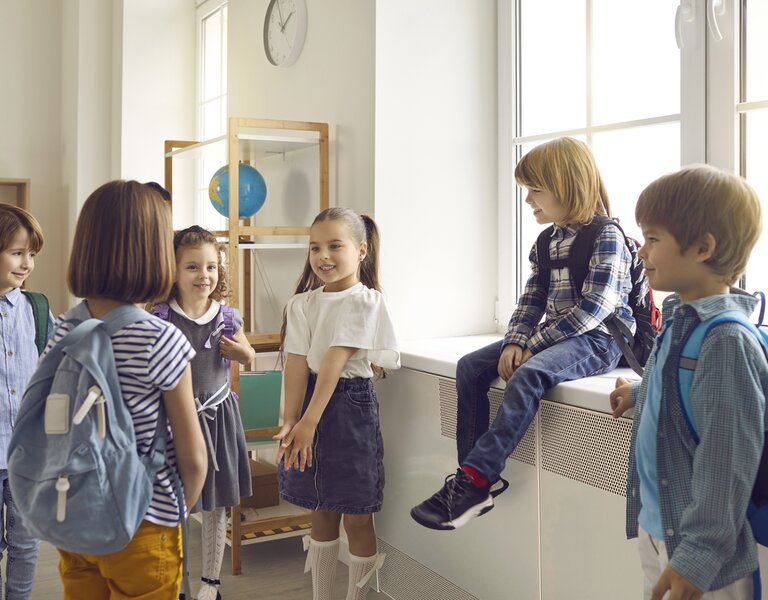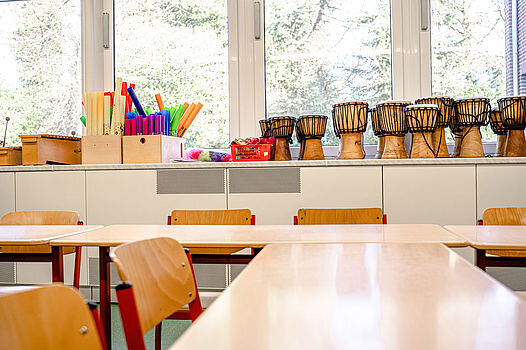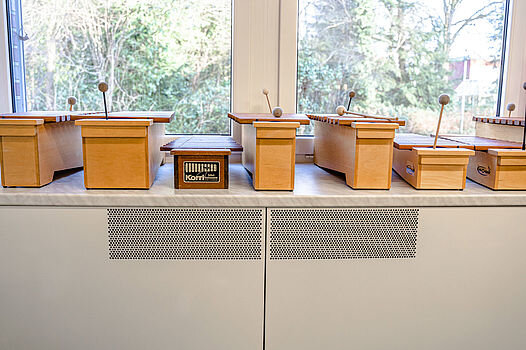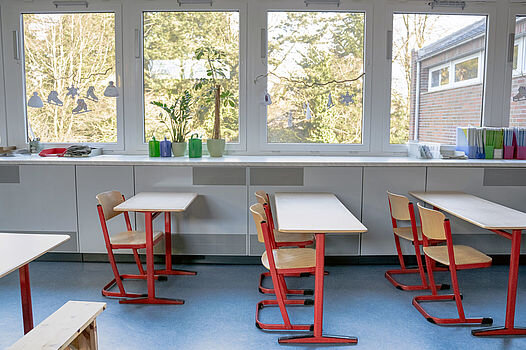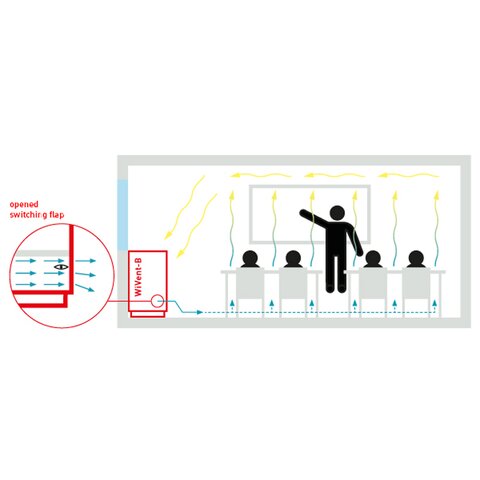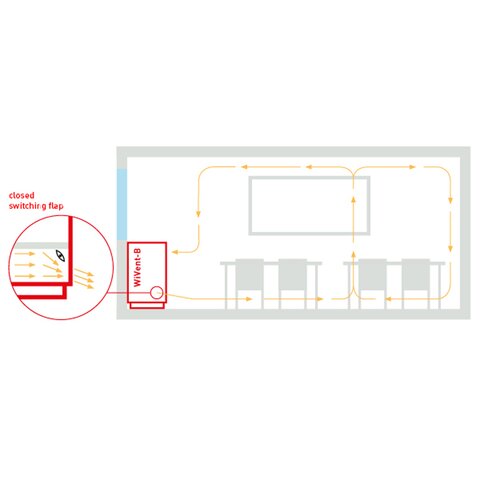The WiVent-B decentralised school ventilation unit is ideal for ventilating classrooms, for use in conference rooms or for improving the indoor air in other educational institutions. Fresh air plays an immensely important role in the concentration and health of pupils. The WiVent-B school ventilation unit guarantees high air quality and a pleasant indoor climate in both summer and winter.
The WiVent-B school ventilation unit: the most important facts in brief
The information presented in this article, particularly concerning regulations and funding opportunities, primarily pertains to Germany.
At Wildeboer, we offer - in addition to the WiVent-B school ventilation unit - various products for optimising air distribution. Especially in closed rooms such as schools or other educational institutions, it is important to control the supply air and exhaust air in order to produce good air quality. With our school ventilation unit, you can achieve this and more:
- Single room ventilation: The WiVent-B school ventilation unit does not feed exhaust air from one room into the supply air of another room.
- Sensors record both the temperature and the CO2 content of the room air and provide the control variables for demand-dependent ventilation
- Excellent indoor climate conditions: With the school ventilation unit, you can both heat and optionally cool the rooms.
- Window ventilation is still possible. The decentralised school ventilation unit switches off automatically when the windows are opened by means of window contacts.
- Excellent hygiene: Our WiVent-B decentralised school ventilation unit is maintenance-optimised with smooth surfaces and is therefore easy to clean Production is tested regularly, these are spot checks and always on a different product. The certificate is issued once only. It has a hygiene certificate issued by an independent institute.
Detailed technical information can be found on the WiVent-B decentralised ventilation unit product page.
Possible uses of the WiVent-B school ventilation unit
WiVent-B is suitable for both renovations and new builds. The devices can be positioned under the window sill to save space and offer a visually high-quality surface. In the case of refurbishment, radiators can be removed. When connected to existing heating pipes, the devices take over the heating of the rooms.
The factory-set control parameters can be easily adapted to the desired conditions in the room. Different operating modes enable convenient harmonisation with the room usage profile. Despite the automatic control, intervention by the room user is possible via various room control units.
The importance of CO2 concentration for school ventilation units
Fresh air with a low CO2 concentration increases the ability to concentrate. It is therefore particularly important in schools that pupils in the classrooms are supplied with sufficient fresh air. The WiVent-B school ventilation unit guarantees a stable indoor climate with good air quality for pupils and teachers in the classroom, even with varying occupancy levels.
Based on the measured CO2 concentration, the air exchange also reduces aerosol concentrations and lowers VOC concentrations. This ensures healthy indoor air permanently and completely automatically.
The special feature: A special switchover flap allows the user to switch between a low-turbulence displacement air flow and a high-pulse mixed air flow as required.
The cooling function of the school ventilation units
The displacement air flow is characterised by a low degree of turbulence and an extremely low impulse. These features guarantee maximum comfort for pupils and teachers and enable increased ventilation effectiveness. The high penetration depth into the classroom is remarkable despite the low impulse. On hot summer days, the cool, fresh air is reliably distributed throughout the classroom.
Reliable even with obstacles
Even in an equipped and occupied classroom, the aim must be to achieve a very good ventilation result. The reliable apprenticeship of a fresh air lake is an important basis for ventilation with displacement air flow. Obstacles such as satchels cannot stop a well realised displacement flow.
Heating capability of decentralised school ventilation units
WiVent-B decentralised school ventilation also ensures a pleasant learning environment in winter. In order to bring supply air into the room during heating, a larger impulse is required due to the higher temperature. This is achieved with the aid of a special changeover damper. This type of flow also ensures that the room is well flushed, so that the classroom reaches a pleasant temperature in a short time.
As a company specialising in building services engineering, e.g. for air distribution, our trained specialists are always available to answer your questions. If you are still unsure about the WiVent-B school ventilation unit or are interested in installing it in your school, we look forward to hearing from you!
Frequently asked questions about our school ventilation units
Thanks to the modular design and intelligent construction, individual assemblies can be removed and maintained easily and without tools. The certified hygiene in ventilation technology and smooth surfaces minimise soilling and make cleaning easy.
Ventilation via the windows is possible at any time. Window contacts can be used for this purpose, which switch off the school ventilation unit as soon as the window is opened. As soon as the window is closed again, ventilation operation restarts automatically.
The installation of a room control unit is not mandatory, but is recommended, as this allows the individual needs of the students and teachers on site to be catered for. It is also possible to make these adjustments via a well-designed web interface.
The control of the decentralised school ventilation units can be adapted to the individual use of the classrooms on a daily basis and to the minute. Seven different operating modes are available for this purpose, which can be assigned to up to twelve time windows. These can also be configured for times when the school is not in use, such as during holidays.
The classrooms or teaching rooms to be ventilated should have a connection to the façade so that outside air and exhaust air can be channelled through. For optimum ventilation of the room, sufficient space should be allowed for the installation and a room depth of eight metres should not be exceeded.
